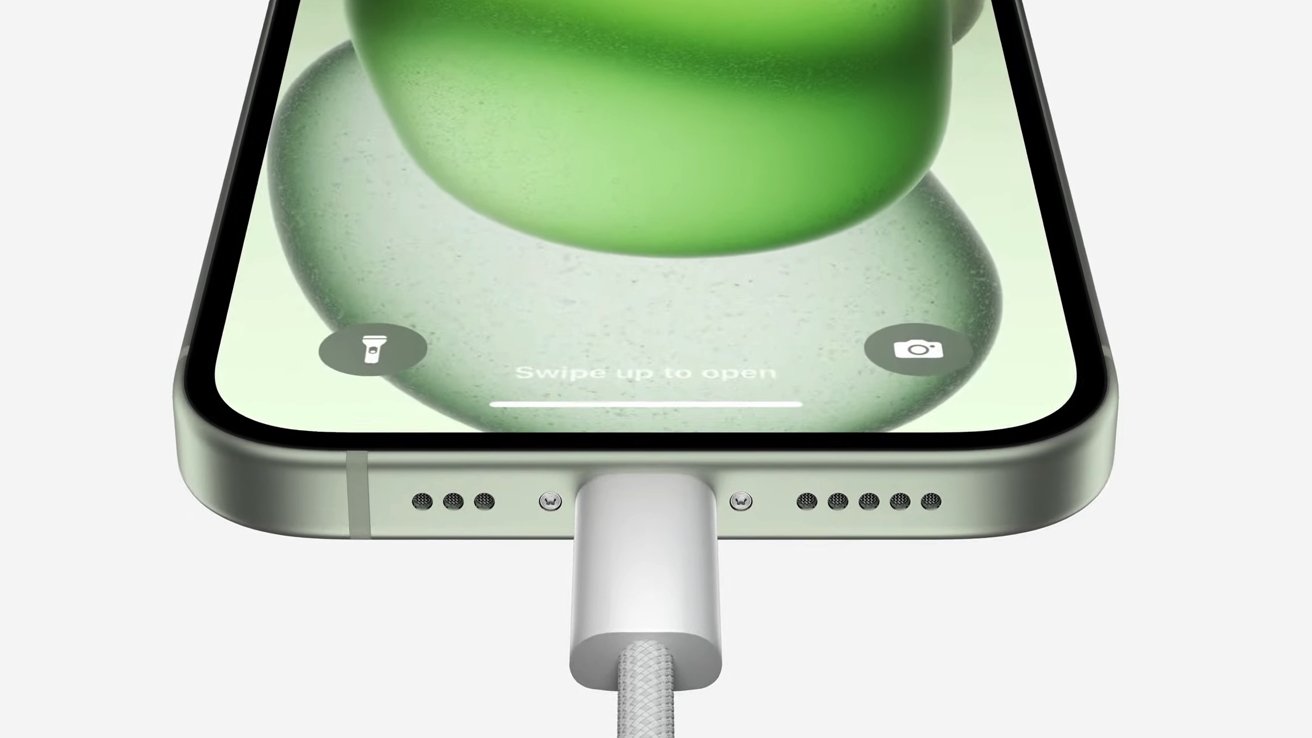Apple’s tech specs for both the iPhone 15 and the iPhone 15 Pro have revealed that an adapter is no longer required to connect the devices to a monitor — and that monitor can display up to 4K HDR at 60Hz.
Previously, connecting a monitor to an iPhone required a Lightning to HDMI adapter of some sort, and was limited to 1080P video, or AirPlay to a compatible device in some cases. The addition of USB-C to both units has upgraded this compatibility greatly.
Given the nature of the DisplayPort alt mode embedded in USB-C, it’s likely that a USB-C to HDMI cable will work, and so will a USB-C to USB-C cable, as work on a USB-C iPad Pro now.
Apple spells out what the device can do, including this capability, on the iPhone 15 tech specs page. And, as MacRumors noted in their discovery of the feature late on Thursday, it’s also possible to use Apple’s USB-C Digital AV Multiport Adapter for 40K/60 on HDMI, but without HDR.
iPhone USB-C data speeds have no bearing on USB-C DisplayMode alt mode capabilities
It’s beyond the scope of this article to discuss how USB-C channel allocation works, and the differences between the A16 Bionic and the A17 Pro have led to USB 2.0 raw data speeds at the lower end, yet enough speed for 4K60 video on both.
In short, the A16 chip does not have USB 3 support natively on the chipset. The fourth generation iPad Air that could reach those transfer speeds had a discrete USB controller off the die, and only the “X” A-series processors had closer to USB 3 data speeds. It appears that the A17 Pro chip also has full USB 3 support with DisplayMode alt mode implementation.
Apple seems to have chosen to allocate fixed bandwidth to this video feature in the iPhone 15 on USB-C. It also appears to use USB-C timing and dynamic pin data allocation to distribute bandwidth as necessary on the iPhone 15 Pro.
Presumably, this feature will work with USB-C docks the same as it does on the iPad with the iPhone 15 Pro, minus Stage Manager which is not supported on iOS 17, but is on iPadOS 17. It’s not clear if docks will work the same on the iPhone 15 yet given the USB 2.0 data rate on the lower-end device, and only actual testing will tell.





